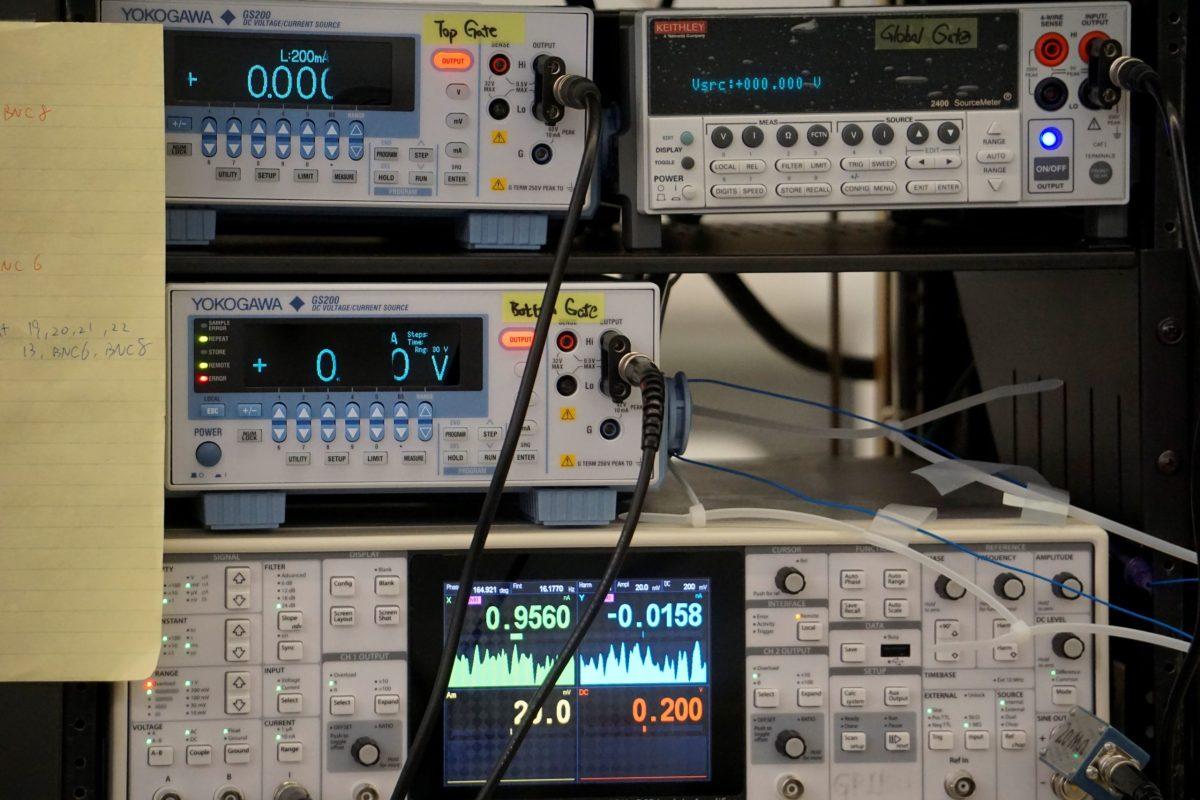In the underground floor of the Bioengineering and Sciences building sits the Quantum Transport Lab. Although it might not delve into teleportation, its study of particles interaction at the quantum level is no less fascinating.
The Quantum Transport Lab at UTD investigates particles at an impossibly small scale by putting elements at absolute zero temperatures. Recording their activity at an inconceivably small scale allows the researchers to gain new insights into quantum mechanics. It uses devices like a refrigerator that goes so low in temperature that it is classified as the coldest spot in North Texas. This extreme cold slows down the particles, minimizing thermal noise and enabling clearer observation of their interactions and behaviors in various materials.
Dr. Xiaoyan Shi, principal investigator for the lab said its area of study is more of a foundational science—it aims to uncover the fundamental principles that govern quantum behavior. This exploration is vital for advancing our understanding of quantum mechanics, providing a basis upon which future technologies can be developed. So far UTD’s researchers have published 35 scientific papers on the topic.
Because the behavior of particles is best isolated under extreme cold, the lab uses its cryogenic free dilution refrigerator capable of reaching temperatures as low as 10 millikelvins (-459 degrees Fahrenheit) to study particles. Operating at such low temperatures allows student researchers to observe quantum level behaviors within these materials more clearly with less interference since even small changes to the samples can be heavily affected by temperature among other factors.
While intricate and grounded in advanced concepts, the lab’s work is designed to be accessible to students from a wide array of academic backgrounds. Participation from students across different STEM majors, not just those with a focus on physics. In the past, Shi said they’ve had computer science student researchers propose a machine-learning program to detect which sample is best from an image.
“To be involved in these labs you do not need to be a physics student, any major,” Shi said. “In previous years we even had two undergrads propose a machine learning [algorithm] to detect which [sample] is the best one from an image.”
As a Tier 1 research institution, UTD is extremely active in producing research. Labs like the Quantum Transport Lab often have open positions for undergraduate students to fill and offer practical experience applying the theoretical knowledge conveyed in class to real world research.
Alejandro Garcia served as a student researcher in the lab during the 2022 school year, focusing on enhancing machine learning algorithms for the automatic detection of layers in the lab’s graphing techniques. His research proved useful during his grad school applications.
“It doesn’t even have to be research [a student is] planning on doing in grad school, it can be something different,” Garcia said. “I was doing computational research there [UTD], here [UNM] I am going to start research in the summer. It will not be computational, it’ll be experimental with optics.”





